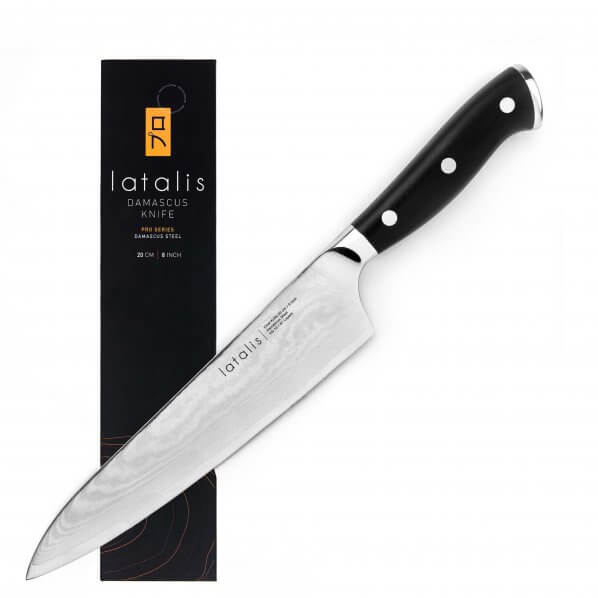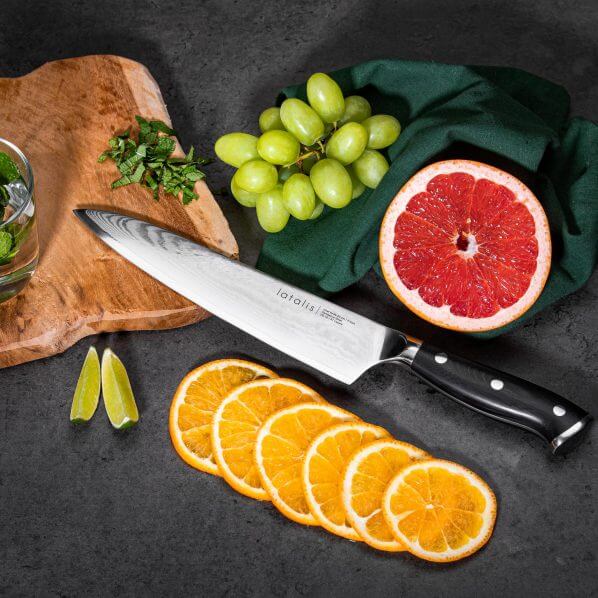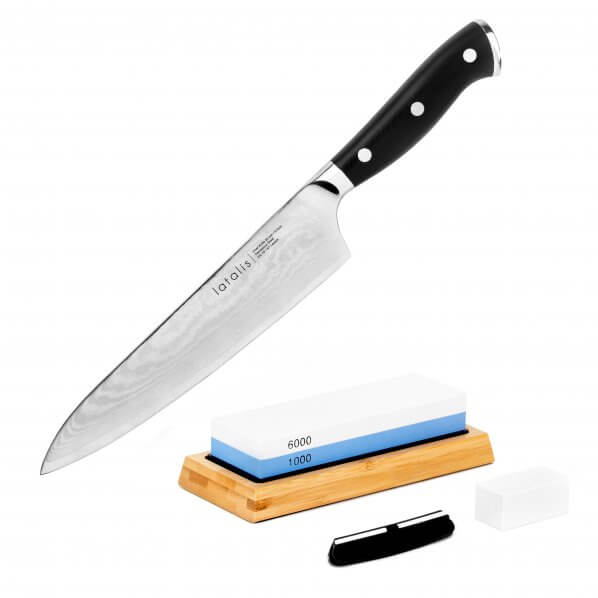
Damascus Knife
There are countless types of chef’s knives, ranging from a santo knife to a damascus knife. The place where the knife comes from influences the knife’s its status. If a chef’s knife is Japanese, for example, it is often highly regarded. A Japanese damask steel knife is an example of this.
What is a Damascus Knife?
A damascus knife is a chef's knife of Japanese origin. The knife can be used for almost every ingredient. Be careful with very hard products, however, to avoid the risk of damaging the blade. Like other Japanese knives, they are made of a hard steel that makes the blade thin and allows for a very precise cutting experience. What is makes a damascus knife unique is the way the material is made. Below we will explain more about damascus steel and the difference between a damascus knife and a regular chef's knife.
The special properties of a damascus knife
A damascus knife is made out of damascus steel. This stainless steel, also called damascus steel, is made of many layers of forged steel. The number of layers can be as much as 67. This makes the knife both harder and stronger than a regular kitchen knife. In the past, this process was necessary to produce high quality steel, but now that we understand other materials and methods, making damask steel has almost become an art form. By using different types of steel, smelting them and folding these sheets several times, patterns become visible on the blade, which creates a beautiful effect. Apart from hand-made damask, there is also industrial damask. Most kitchen knives are made of this material. Often two layers of damask steel are combined with a normal strong steel. This is also for aesthetic purposes and makes a damask chef's knife hard, strong and extremely beautiful.
The difference between a damascus knife and a regular chef's knife
European chef's knives are not made of layers of steel and are usually somewhat thicker due to the single metal type. Because the Japanese multilayer knives are sharpened thinner, they are stronger and can be used for very precise cutting tasks. Whereas European chef's knives are often flexible, with Japanese knives you have to be careful not to damage the blade by cutting harder materials. Both knives are versatile and can be used frequently in the kitchen. Take a good look at which knife suits your needs in the kitchen. There are many different models of European chef's knives as well as Japanese knives forged from damask steel.
How to store a damascus knife?
Storing such a fine damascus knife in the right way ensures that it stays sharp for a longer time. Use a magnetic knife block or a magnetic knife holder allows you to safely store your beautiful damascus knife while displaying them in a neat manner. If the Damascus knife becomes a little dull after a long period of intensive use, it can be easily sharpened by using a whetstone or a knife sharpener.








